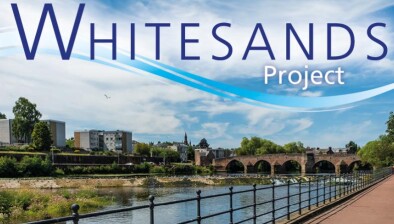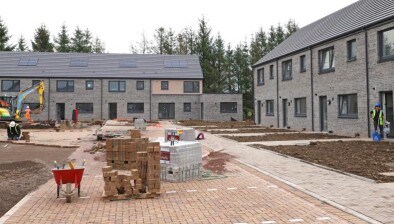Property development company’s appeal against council’s new local plan refused

A property development company which challenged a local authority’s decision to adopt a new local plan has had an appeal refused by a judge in the Court of Session.
Calmac Developments Ltd, the owner of the Woodland House Hotel on the edge of Dumfries, appealed against a decision of Dumfries and Galloway Council which meant that the site occupied by the hotel now fell outside the settlement boundary, and that the company’s plans to develop an adjacent area of land would be dealt with under “more restrictive” housing policies.
However, Lord Turnbull ruled that the council’s reasons for refusing the company’s refusing to make any change to the Proposed Local Development Plan in light of the representations received were “proper, adequate and intelligible”.
The court heard that prior to the adoption of the 2014 Local Development Plan, the Woodland House Hotel – which is situated between two small settlements known as Newbridge and Woodlands – lay within the settlement boundary of Dumfries, which was governed by the Nithsdale Local Plan 2006.
But as a consequence of the adoption of the 2014 plan the Dumfries settlement boundary changed, with the result that the area occupied by the hotel, and the settlements of Newbridge and Woodlands, now lay outside the boundary.
Another area of land adjacent to the hotel – referred to as LN12 – which was not owned by the appellant but had been earmarked for a possible future small-scale housing development, was similarly affected by the settlement boundary change.
A planning application for such a proposal would previously have been determined in accordance with housing policies applying within the settlement boundary of Dumfries, but as a consequence of the redrawing of the boundary it was contended that any such application would face a “potential embargo” as it would be assessed in terms of different, “more restrictive” policies.
Counsel for the appellant contended that both the respondents and the reporter had failed to consider the appellant’s representations on the effect of the reduction in the settlement boundary of Dumfries and had failed to consider how to classify Newbridge and Woodlands in planning terms if the boundary of Dumfries was to be restricted.
It was argued that the respondents had failed to take account of their own policy in relation to how it should classify settlements and had failed to take account of a representation that Newbridge should be classified as a village in the event that the Dumfries settlement boundary was reduced.
Counsel also submitted that no reasons had been given for not recommending that Newbridge should be designated as a village.
However, counsel for the respondents explained that no reasons had been given for declining to classify Newbridge as a village since no representations had been made to the respondents that they should do so.
In the answers to the present appeal the respondents explained that Newbridge and Woodlands were considered to be two separate settlements, each of which remained unclassified after the adoption of the 2014 plan.
Since the adoption of that plan the respondents had determined that Woodlands should be characterised as a small building group in light of the receipt of planning applications for development within that settlement, and they intended to consider the classification of the settlement of Newbridge on receipt of any planning applications for development within that settlement.
The judge ruled that if the respondents were correct in their submission that the only representation made to them by the appellant concerned the placement of the boundary of the settlement of Dumfries, then the reasons given by them for reducing the boundary area were “adequate”.
In a written opinion, Lord Turnbull said: “The reasons given explained the exercise of an understandable planning judgement in a concise manner which would be understood easily by an informed reader familiar with the background and the issues. It would be obvious that the decision to exclude the area LN12, the appellant’s property and the settlements of Newbridge and Woodlands had been arrived at by identifying an appropriate and defensible boundary for the settlement of Dumfries, the identification of a landscape buffer and the conclusion that the housing needs of the area were otherwise met.
“If this was the only representation made to the respondents, then their decision, as communicated to the appellant, made would meet the test of a proper, adequate and intelligible set of reasons dealing with the substantive point raised. The reasons would therefore meet the tests as discussed in the cases identified… On this view it would follow that the adoption of this reasoning by the reporter was also beyond criticism.”
The remaining issue in the appeal was therefore whether or not the respondents were required to address the question of whether the settlement of Newbridge ought to be classified as a village.
Lord Turnbull added: “Since no request was made to the respondents to classify Newbridge (or Woodlands) as a village within the Proposed Local Development Plan, there was no obligation on the respondents to provide answers for not doing so. Nor can it be said that the respondents acted illegally in leaving each settlement unclassified in planning terms within the 2014 Local Development Plan.”

















